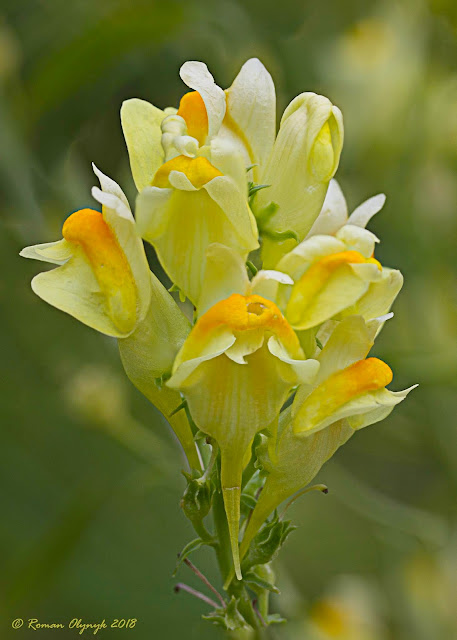I was using a monopod, but there was no breeze today, so I got a nice sequence of eight shots of a Toadflax (Linaria vulgaris).
The focus stacking worked out pretty well, as you can see in the above composite shot.
This pretty little relative of the snapdragon is an invasive species in North America. It's quite successful around here, because it thrives in disturbed land. And West Virginia is a pretty disturbed land.
The flowers are largely closed off by the underlip of the plant, so it takes a strong insect like a determined bee or a bumblebee to pry its way into it.
Because of its widespread range and its long history as an herbal, the Linaria vulgaris has a long list of aliases:
- brideweed
- bridewort
- butter and eggs
- butter haycocks
- bread and butter
- bunny haycocks (ok, what are haycocks?)
- bunny mouths
- calf's snout
- Continental weed
- dead men's bones
- devil's flax
- devil's flower
- doggies
- dragon bushes
- eggs and bacon
- eggs and butter
- false flax
- flaxweed
- fluellen
- gallweed
- gallwort
- impudent lawyer (is that a great name, or what?)
- Jacob's ladder
- lion's mouth
- monkey flower
- North American ramsted
- rabbit flower
- rancid
- ransted
- snapdragon
- wild flax
- wild snapdragon
- wild tobacco
- yellow rod
- yellow toadflax
Haycock, I just learned, is the name of a small conical haystack, usually only three or four feet in diameter and six or so feet high.
Now, don't tell me that you didn't learn something today.
If you want to surf the web some more, by all means check out Haycocks No.09.
If you want to surf the web some more, by all means check out Haycocks No.09.



